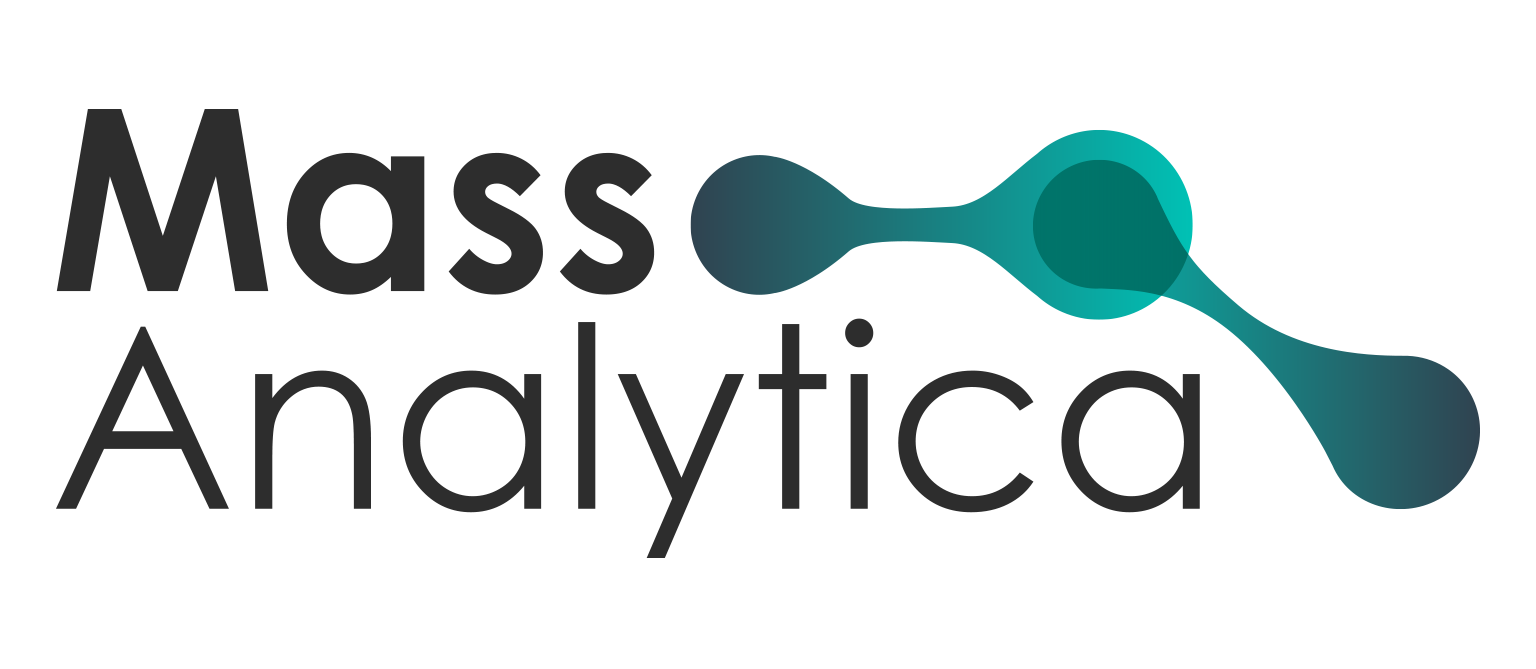You must be logged in to access this content. Not yet registered? Create a new account
Tutorial_Lip_MSI_10
You must be logged in to access this content. Not yet registered? Create a new account
72nd ASMS Annual Conference 2024
Mass Analytica posters at 72nd ASMS Annual Conference 2024
Pyxis Unveiled: Advancing Single-Cell MALDI MSI Analysis for Deeper Molecular Insights
Pyxis Unveiled: Advancing Single-Cell MALDI MSI Analysis for Deeper Molecular Insights
72nd ASMS Conference on Mass Spectrometry. June 2024
Abstract
Introduction
Single-cell metabolomics and lipidomics using Matrix-Assisted Laser Desorption/Ionization Mass Spectrometry Imaging (MALDI MSI) is emerging as an exciting tool to study metabolic alterations across heterogeneous cell populations. Single-cell analysis using MALDI MSI does however come with technical challenges, including sample preparation workflows compatible with fluorescent microscopy and downstream MS analysis, as well as dedicated data processing workflow to coregister microscopy with MSI and extract profiles from defined cells for later analysis. Here, we introduce an efficient single-cell MSI data analysis pipeline utilising the cutting-edge Pyxis software platform. The performance and versatility of the pipeline are demonstrated by single-cell lipidomics and metabolomics analysis of human-derived astrocytes, unravelling intricate molecular insights at the single-cell level.
Methods
Human astrocytes were generated using induced pluripotent stem cell-derived neurons. Live astrocyte cultures were stained with CellBrite Green and Hoechst, fixed with PFA and washed with cold ammonium acetate prior to microscopy. Following microscopy cells were coated in 2,5-DHA matrix via sublimation for lipid imaging or NEDC matrix using a HTC TM-Sprayer for metabolite imaging for MALDI and MALDI-2 analysis, respectively, using an Orbitrap Elite coupled to a Spectroglyph MALDI/ESI ion source (Spectroglyph LLC, Kennewick, WA, USA). Coregistration with microscopy, segmentation at single-cell level, extraction of spectra generated from single cells, and dedicated statistics to process single-cell spectra were performed using Pyxis (Mass Analytica, Spain). Features of interest were annotated using HMDB and LIPID MAPS databases integrated in Pyxis.
Preliminary data
You must be logged in to access this content. Not yet registered? Create a new account
Revolutionizing Spatial Dermatology: Investigating Sunfilter Efficacy on Reconstructed Human Epidermis with AP-MALDI MSI Metabolomics and Dedicated Data Analysis Software
Revolutionizing Spatial Dermatology: Investigating Sunfilter Efficacy on Reconstructed Human Epidermis with AP-MALDI MSI Metabolomics and Dedicated Data Analysis Software
72nd ASMS Conference on Mass Spectrometry. June 2024
Sara Tortorella1; Maureen Feucherolles2; Giulia Sorbi1; Giuseppe Arturi1; Sue Kennerley3; Gilles Frache2; Ismael Zamora4
1Mass Analytica, Bettona, Italy; 2Luxembourg Institute of Science and Technology, Molecular and Thermal Analysis, Belvaux, Luxembourg; 3K R Analytical, Sandbach, United Kingdom; 4Mass Analytica, Sant Cugat del Vallès, Spain
Abstract
Introduction
Atmospheric Pressure Matrix-Assisted Laser Desorption/Ionization mass spectrometry imaging (AP-MALDI MSI) is a variant of the MALDI technique. The capacity of AP-MALDI MSI to work in an atmospheric environment eliminates the need for vacuum chambers, allowing for the preservation of native hydrated samples as well as the analysis of vacuum-incompatible compounds. This facilitates integration with other analytical techniques and increases sample preparation versatility. It has found applications in many fields such as biology, including spatial dermatology, where the analysis of complex biomolecules is essential. Here we introduce Pyxis, novel vendor neutral software for comprehensive AP-MALDI MSI data analysis, to investigate the spatial lipidome distribution and alteration within sunfilter-protected and -unprotected reconstructed human epidermis (RHE) sections, submitted to UV radiations.
Methods
RHE sections subjected to three test conditions: no UV stress and no sun filter (n=12), UV stress and no sun filter (n=12), and UV stress and sun filter (n=12), were washed, coated with HCCA matrix using the SunCollect MALDI Sprayer (SunChrom GmbH, Germany), and analysed by AP-MALDI MS in both positive and negative ion mode. Here, the compact AP-MALDI (ng) UHR system (MassTech Inc., Columbia, MD), was coupled to a high resolution Orbitrap Exploris 480 mass spectrometer (ThermoFisher, San Jose, CA). Imaging experiments were performed at spatial resolution of 5 µm per pixel, over a mass range of 205–2000 Da and at a mass resolution of 240,000@m/z 200. All data analysis and identification was performed using Pyxis (Mass Analytica, Spain).
Preliminary data
You must be logged in to access this content. Not yet registered? Create a new account

